What is a short skin?
Åsnes, among others, first experimented with the short skin in the ‘70s and ‘80s. The idea was to create a skin providing both good grip in all conditions and sufficient glide when skiing. The length of the short skin was standardized to be slightly longer than the size of an average wax pocket on cross-country skis built for the mountains (fjellski, in Norwegian). Ours are intentionally a little long, allowing you to shorten it yourself according to your own weight, technique and preference. Unlike grip wax, skins aren’t temperature-sensitive. This makes for a very versatile and dependable solution, regardless of weather and conditions. Think of short skins as performing as a universal wax functioning in basically all conditions.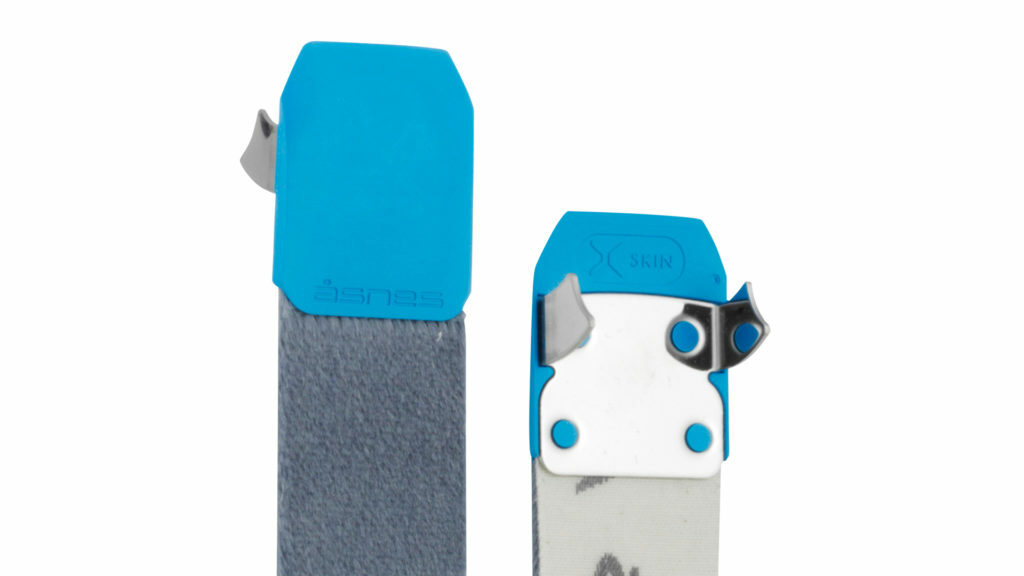
Åsnes X-Skin Mohair short skin with Skinprotector®
When to use short skins
X-Skins are excellent for cross-county skiing in the backcountry. They’re so useful and functional, and require such little maintenance, that they amount to standard equipment; all Åsnes BC skis should come with a pair. A short skin offers a solid grip under the ski regardless of the conditions. With the skin in the grip zone, glide isn’t significantly impaired. Short skins especially excel in deep snow, on long tours where waxing is difficult, for pulling a pulk, or if you just want a simple solution for guaranteed grip, regardless of conditions. Some choose to attach them permanently under the ski, especially on expeditions. You can put them on top of hard grip wax without damaging the adhesive. They can also give some security to those who want a little resistance on difficult descents. The Åsnes short skin has become the industry standard. The insertion and attachment system have been tested, to literal destruction, over years in some of the world’s most inhospitable places.Short skin or long skin?
You should have a short skin or two with you no matter where you go in the mountains. If your wax fails, or you want to do some climbing, they save so much sweat. And if you want grip without waxing your skis, they’re simply convenient. Long skins provide more resistance and more grip. That’s useful for the steeps. But they’re not recommended for flatter terrain apart from in special situations.A guide to functional skins
Skins are a wonderful tool for opening the door to experiences in nature. There are just a couple of things you can do to keep them performing as they should. Here’s what every skin-owner should know.1. Keep the adhesive clean and dry
One of the most important rules for keeping skins happy is to keep the glue away from dust, dirt, vegetation, stones, dog hair, carpets, and anything else that can get stuck in there.2. Remove ice and snow from the glue – they’ll stick
Out in the mountains, snow and ice get on to the glue. It’s just the way it goes. You can usually just brush it off with a glove. If there’s a lot, you can scrape the back of the skin over a steel edge. You can also just fold them up and put them in an inside pocket. The ice and snow melt, the glue warms up and the skin might dry a little. Then it’ll stick.3. Beating the cold
When it’s really cold, the skin gets cold too. This means a stiffer skin and stiffer glue – maybe even a skin that doesn’t want to stick to the ski. When this happens, warm the skin with body heat under your jacket. On long days below -15° or thereabouts, stick the skin into your inner pocket when you’re not using it.4. Good routines
Glue tends to fail at the back of the skin first, sometimes at the front by the attachment. This is where snow, ice, water and dirt are most likely to get into the glue. Check your skins regularly; remove vegetation and other obvious stuck in the glue; store the skin in an inner pocket if necessary. Also bring a stick of skin wax to prevent the skin from absorbing moisture. Maybe even a tube of skin glue for spot-repairs in the field if necessary.5. Emergency solutions
If things really go south, a ski strap, gaffa tape or sports tape can save the day. Or at least give you enough to get out of the mountains. But we repeat: routines!6. A dry skin is a happy skin
Wet snow exists. In the spring, it’s a real hazard. This can lead to very damp skins. These are perfect conditions for skins becoming ice-magnets. Especially if temperatures fluctuate. At this point, enter skin wax. You should ALWAYS have some skin wax in your pocket; it can save the day! The other thing you can do is stick glide wax on your skins in almost the same way you would with your glide zones. The wax protects from wear; it stops moisture getting in; it improves glide. Between uses (and out in the field) skins can dry and warm up in your inner pocket. Again, good routines and preparations are key here. Give you skin a good waxing before you set out, or at the start of the season!7. Icing? No thanks
OK, so – you forgot to wax and your skins are covered in ice. Well, no one’s perfect. All is not lost. First, scrape away what you can using a steel edge, a wax scraper, or whatever you have to hand. One of us has used the old iPhone 5 with the sharp sides before. Leave the skins on. Try to scrape from the front tip all the way back to the rear tip. You’ll probably be able to squeeze and scrape enough out. If it’s sunny, you can put the skin in the sun with the problem side facing the sun. They might dry out a little when you have your sandwiches. Finally, you should apply skin wax – and LOTS of it. If you don’t have any to hand, use what you have. Vaseline. Sunscreen. Silicone. Cooking oil. When you clean it off, don’t spray base cleaner on to the skin – use a rag.8. Always dry skins – at room temperature!
All wet equipment should be unpacked and dried. This is particularly important for skins, because, as we say in Point 6, a dry skin is a happy skin. However, skins should NOT be exposed to direct heat. Don’t put them on heated floors, or near a stove. Hang them on a drying line at normal room temperature. When dry, store them somewhere cool, away from sunlight. A cellar, a garage – somewhere like that.9. Proper storage between use
Most of us store our skins stuck glue-to-glue. But when skins are to be stored for a long period, over the summer for example, it may be good to use a mesh skin-protector between them. Just to be safe. Again, store your dry skins somewhere cool, away from sunlight. In the cellar or in the shed.10. Re-glue your skins when necessary
Sooner or later, glue wears out. It ages; it’s had enough of snow and fingers and grip wax and being dried above a wood-burning stove in huts. This doesn’t mean that the skin’s finished, though: skins get better and better with use. Re-gluing a skin takes a little time from your afternoon, but there are several methods now. And glue’s much cheaper than a pair of mature skins with stories to tell.Choices, choices
Skins come and different materials. These have different strengths, weaknesses and uses. It’s pretty simple – but an equally simple overview might help if you need to know which ski-wig is the one for you. Here is that overview.
Mohair, nylon or mix?
Here’s a brief summary of the advantages, disadvantages and uses of different skin materials.Our recommendation is a Mix or a Mohair skin as your primary skin, preferably in 45mm width for most skis. Then you can later buy a durable Nylon or a faster Race skin later if you need.
You should also buy a narrower skin and trim it for the best possible glide if you mainly use short skins rather than wax. A combination of 2–3 skins at different widths gives an extremely versatile, bombproof, system on longer trips.
Mohair
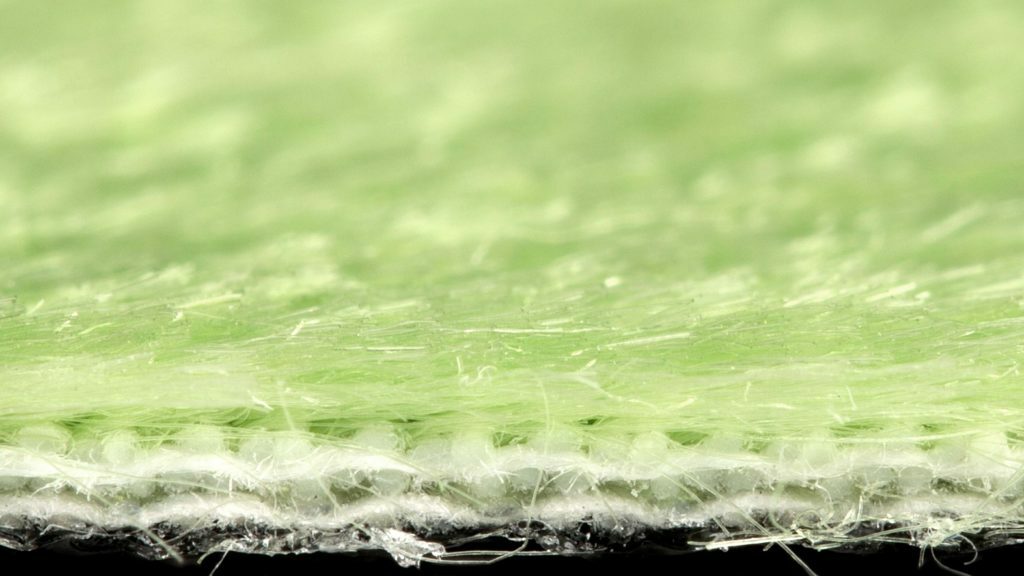
Good glide; superior on cold tracks
Mohair skins are made from natural fibres. These give good glide and shine when it’s cold and dry. Our Mohair and Race skins glide really nicely. On the other hand, the natural fibres absorb a little more moisture and wear a little faster than synthetic fibres do. We recommend skin wax or some kind of impregnation on mohair skins. The Race skin is also made of 100% mohair, but has shorter fibres, meaning less resistance in the glide phase. The disadvantge is that it’s no resistant to wear.
Lifetime: approx. 80,000m
Nylon
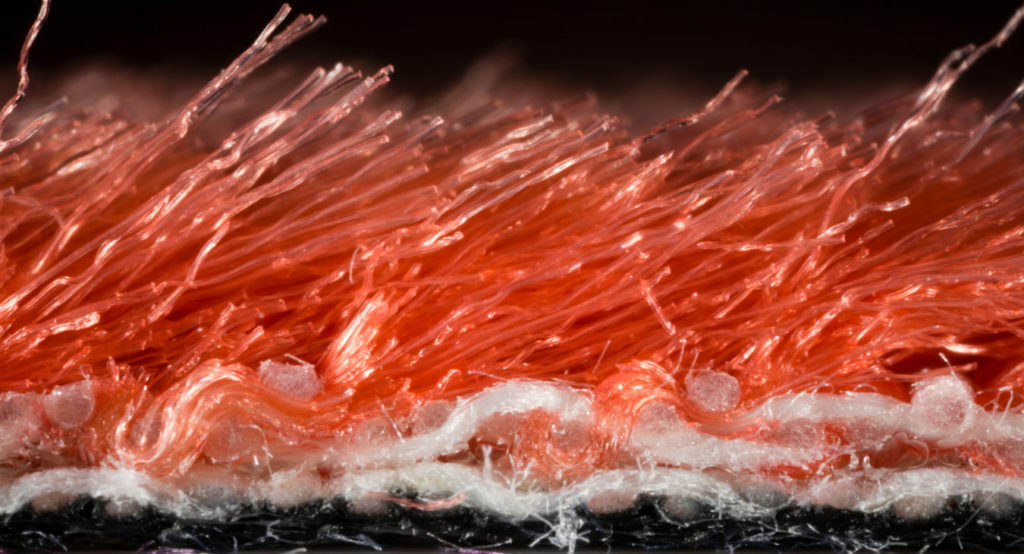
Hard as nails, does not absorb moisture
The nylon skin is, of course, made of synthetic fibres. It’s wear resistant and absorbs less moisture. Skins like these are suitable for hard use and damp conditions. Nylon skins also provide the best grip you can have in the vast majority of conditions. They don’t glide as well, though.
Lifetime: approx. 150,000 m
Mix
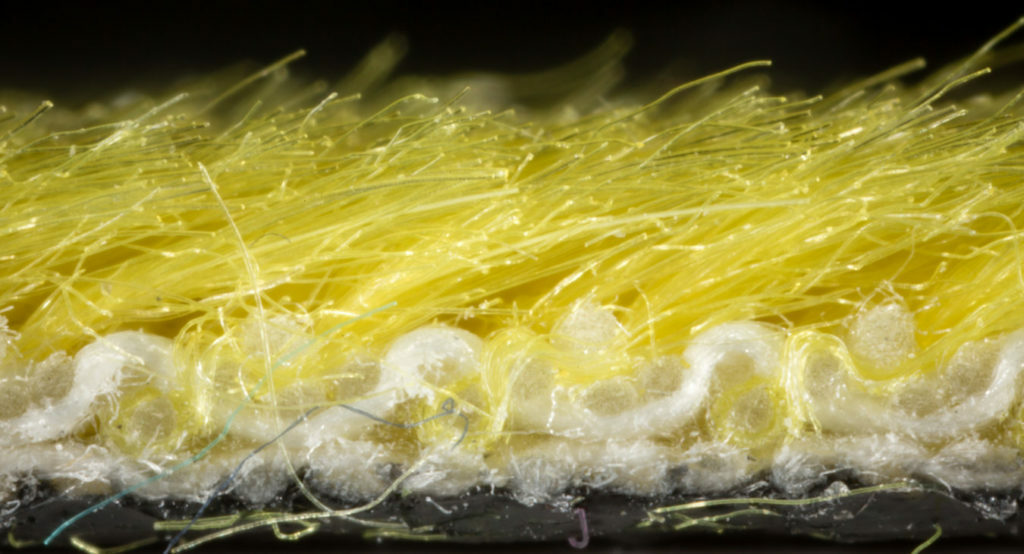
A good compromise – all-rounder
Mixed-fibre skins are good. The most common mix is some 70% mohair and 30% nylon. These skins often combine the best of both qualities with the mohair guaranteeing glide and the nylon offering increased wear resistance and less water absorption.
Lifetime: Approx. 120,000m
Bredde på fell?
Dealing with different conditions and purposes, it’s a nice solution to use skins of different widths. You can, for example, combine a standard 45mm mix skin for universal use and a narrower, shorter, 30mm mohair skin for those situations where glide is a priority – crossing a wide area, using ski tracks, or long flat sections. A wider skin, maybe in a material offering material grip, is excellent if you’re moving in varying terrain or want maximum grip on downhill slopes. Combining skins of different lengths and widths provides a very safe and flexible system on longer trips.Crister Næss Åsnes fixture, ski-guide and gear-nerd
Which width for which use?
30 and 35mm
These skins are primarily chosen for narrower skis, 30–50mm at the waist. The main focus with such a narrow skin is of course low friction and good glide –preferably on trails and flat terrain. They work nicely with slightly wider skis, too, in some conditions even functioning as serious wax replacement, albeit at the expense of climbing properties.
45mm
The most common width. This skin’s a universal solution on all our cross-country skis built for the backcountry – skis with a waist of 50-70mm, usually good all-round fjellski (as we call these skis in Norway).
58-60mm
The widest short skin for fjellski. Often used on wider and more downhill-oritented skis. With this skin on the skis it was designed for, good grip is assured. This is the skin for skis with a waist of 60–70mm.
My skin has fallen off
Skins can fail. But you can un-fail them. Here’s how. Sometimes the skin can come off when you’re hiking. This usually happens on steep slopes, following very large temperature fluctuations, or because you’ve have got snow or water between the base and the glue. To fix this, try this:Customising skins
There are several different ways of adapting skins to your personal preferences. For a start, you can trim the skin for better glide. All short skins from Åsnes come in a standard length of 65cm. For lighter skiers or skiers with shorter skis, this is often too long. The result’s more resistance – and worse glide. Here’s how it’s done:We recommend shortening the skin if you’re glide’s not what you want. Start by trimming to the heel of the binding. If you want to be on the safe side, you can trim 1cm at a time, test, and gradually cut the skin as short as you need.
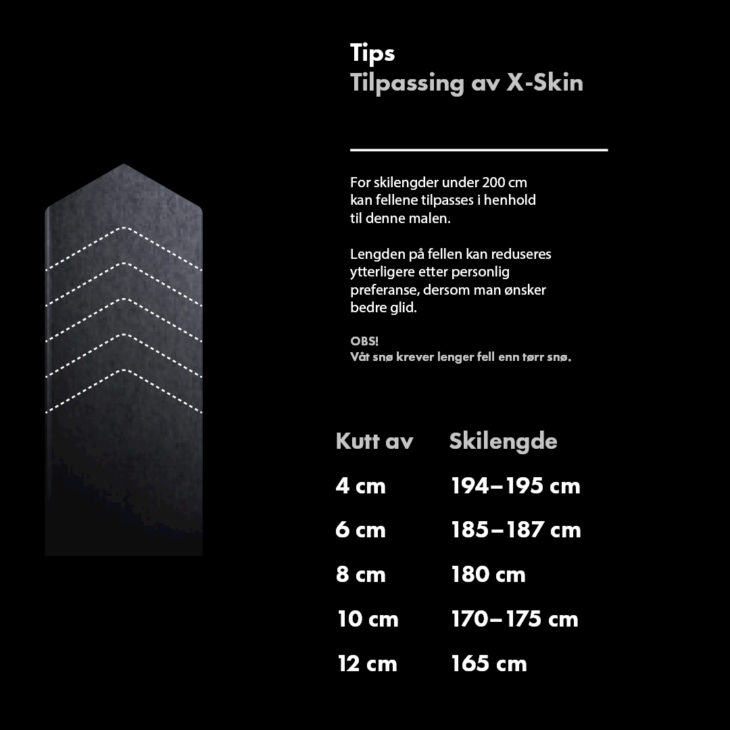
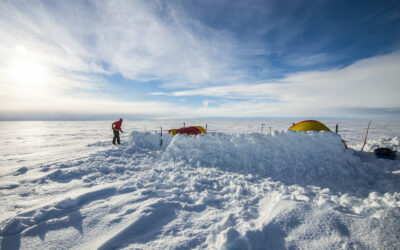
Building a winter windbreak for you tent
To build a windbreak from snow, or not to build a windbreak from snow? This question comes up a lot. Here’s our advice – with a tip for those who’d rather not make the effort…

Field repair kit
Bringing a repair kit can be very useful, even if you’re not going on a long expedition. Preparation, as always, is never a bad thing.
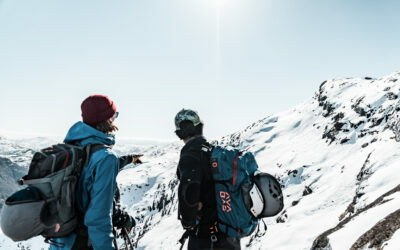
Planning a tour
“Better safe than sorry” doesn’t mean you have to be anxious- Planning isn’t just something that makes your trip to the mountains safer – it’s a source of inspiration.

Tips for taking a dog into the wilds
Positive training and positive experiences in the outdoors make for a confident dog. But setting out in winter is something a little different – especially if you’re overnighting. So we’ve put together some good rules, tips and tricks to make the experience the best it can be. There’s nothing to prevent these tips being applied in your everyday life with your dog, either!

Preparing for Åsnes Expedition Amundsen
Dreaming of an adventure in the winter mountains? Or a lover of endurance races? Maybe Åsnes Expedition Amundsen is for you. But you’ll need to be ready.

17 excellent gear hacks for the wilds
If you’re heading out to the hills, you want to pack as light as possible. In which case, your stuff must multi-task. In that spirit, here are 17 of the best gear hacks we know.
